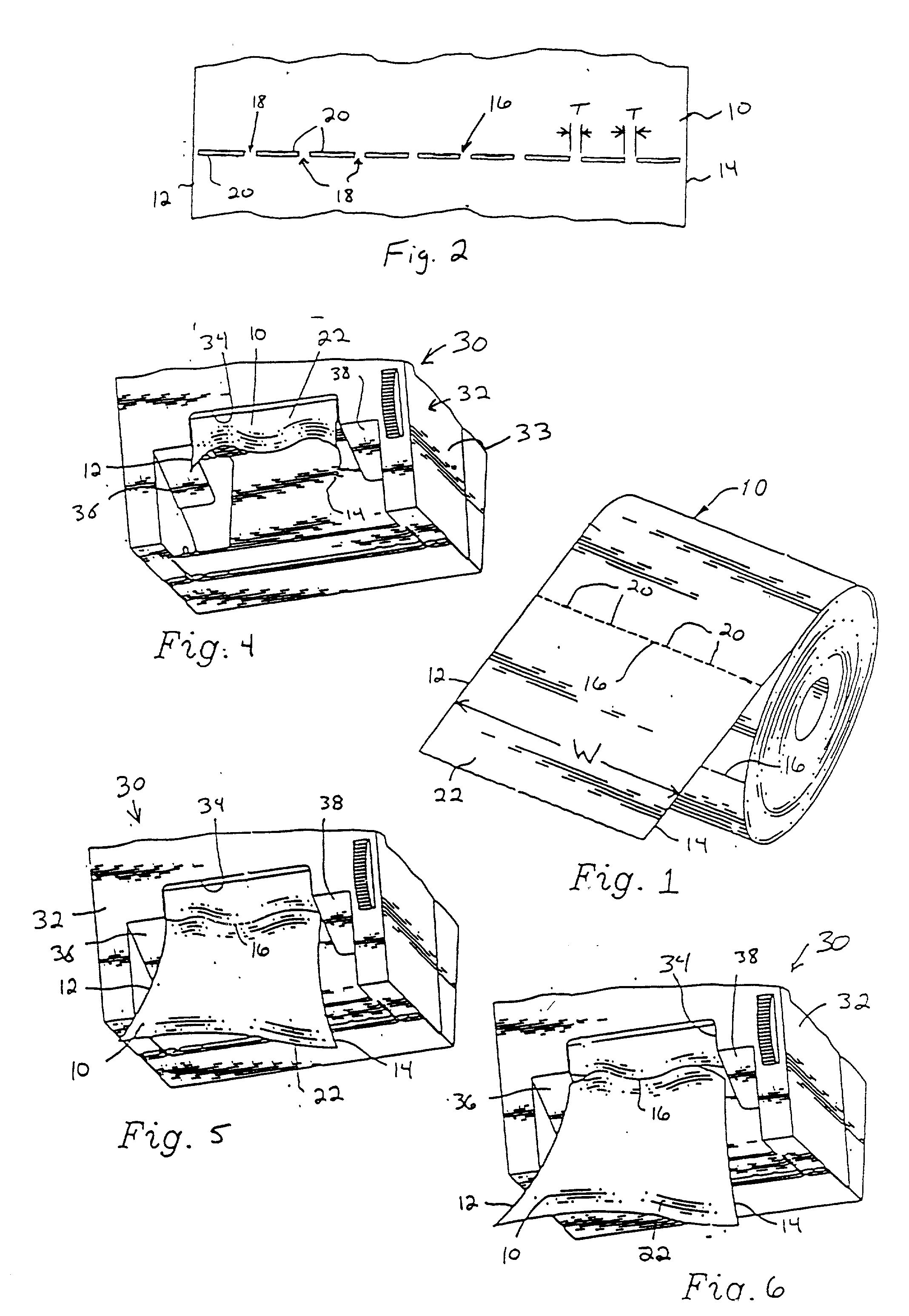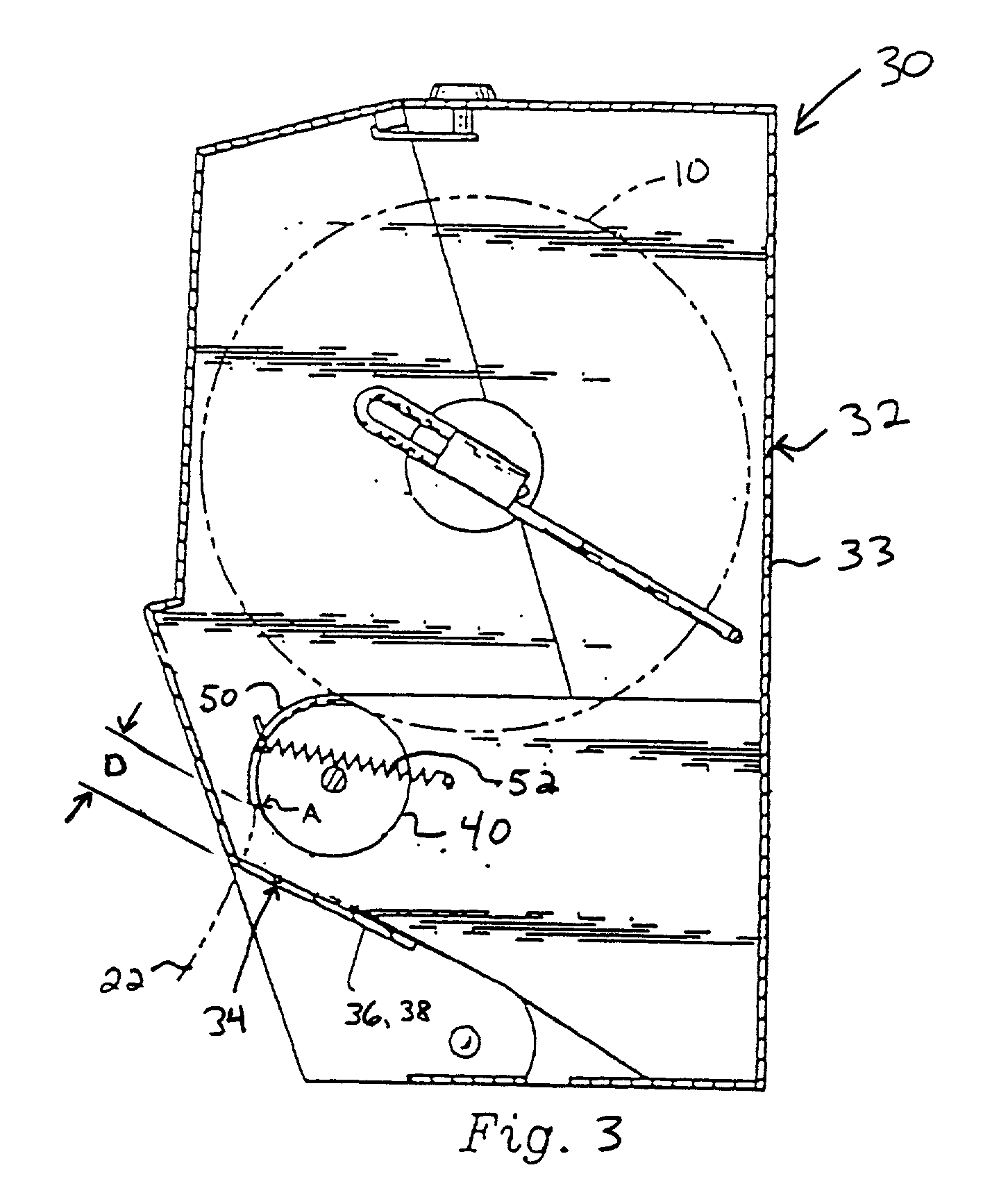Sheet material having weakness zones and a system for dispensing the material
a technology of weakness zone and sheet material, which is applied in the direction of identification means, instruments, seals, etc., can solve the problems of insufficient distance between the material end portion and the dispensing of multiple sheets, and the level of dissatisfaction
- Summary
- Abstract
- Description
- Claims
- Application Information
AI Technical Summary
Problems solved by technology
Method used
Image
Examples
example b
92. Bleached T.A.D. sheet material having a basis weight of about 27.9 lb / ream, MD dry tensile strength of about 6119 grams per 3 inches of width, a CD wet tensile strength of about 1186 grams per 3 inches of width, an MD elasticity of about 6.6%, a tensile ratio of about 1.43, a width of about 0.5 mm for each frangible sheet material portion, and a total width of frangible sheet material portions in each perforated tear line of about 18% of the overall width of the sheet material.
example c
93. Unbleached wet crepe sheet material having a basis weight of about 27.7 lb / ream, MD dry tensile strength of about 6388 grams per 3 inches of width, a CD wet tensile strength of about 1180 grams per 3 inches of width, an MD elasticity of about 8.6%, a tensile ratio of about 1.85, a width of about 1.0 mm for each frangible sheet material portion, and a total width of frangible sheet material portions in each perforated tear line of about 22% of the overall width of the sheet material.
example d
94. Unbleached wet crepe sheet material having a basis weight of about 27.0 lb / ream, MD dry tensile strength of about 5885 grams per 3 inches of width, a CD wet tensile strength of about 1396 grams per 3 inches of width, an MD elasticity of about 7.0%, a tensile ratio of about 1.33, a width of about 0.8 mm for each frangible sheet material portion, and a total width of frangible sheet material portions in each perforated tear line of about 22% of the overall width of the sheet material.
95. In accordance with the invention, a method is provided to control the exposed length (length of the tail) of sheet material extending from the outlet of the dispenser when a user dispenses sheet material from the sheet material dispensing system. This method includes controlling initiation of separation of adjacent sheet material segments by providing the sheet material with a predetermined width of at least one separation initiation region having frangible sheet material portions narrower in widt...
PUM
| Property | Measurement | Unit |
|---|---|---|
| length | aaaaa | aaaaa |
| width | aaaaa | aaaaa |
| width | aaaaa | aaaaa |
Abstract
Description
Claims
Application Information
 Login to View More
Login to View More - R&D
- Intellectual Property
- Life Sciences
- Materials
- Tech Scout
- Unparalleled Data Quality
- Higher Quality Content
- 60% Fewer Hallucinations
Browse by: Latest US Patents, China's latest patents, Technical Efficacy Thesaurus, Application Domain, Technology Topic, Popular Technical Reports.
© 2025 PatSnap. All rights reserved.Legal|Privacy policy|Modern Slavery Act Transparency Statement|Sitemap|About US| Contact US: help@patsnap.com



